In the era of digital transformation, businesses are no longer confined to a single advertising medium. Instead, they operate in an intricate web of platforms, each offering a unique way to reach the audience. With consumers scattered across multiple touchpoints, the onus is on advertisers to harmonize their messaging, ensuring it’s consistent, yet tailored, across these channels. Welcome to the realm of cross-channel advertising, a strategy that, when implemented effectively, can result in greater engagement, conversions, and brand loyalty.
However, implementing a successful cross-channel advertising strategy isn’t just about being present on multiple platforms. It requires a deep understanding of each channel’s strengths, the audience’s journey across these platforms, and how to communicate a brand message that resonates irrespective of where your audience encounters it.
As we delve into this comprehensive guide, we’ll shed light on the nuances of cross-channel advertising, its importance, and how businesses, whether startups or conglomerates, can harness its power for optimal results.
Understanding the Basics of Cross-Channel Advertising
At the outset, it’s vital to distinguish between cross-channel and multi-channel advertising. While they might seem synonymous, there’s a nuanced difference that impacts strategy formulation. Multi-channel advertising refers to using multiple channels, whether online or offline, to reach your target audience. Think of it as having presence across platforms but operating them in silos, independent of each other. Cross-channel advertising, on the other hand, focuses on integrating these channels to deliver a seamless and consistent brand experience to users as they transition between platforms.
The customer journey and touchpoints across different channels
The digital age consumer embarks on a non-linear journey, hopping across devices and platforms before making a purchase. They might discover a brand on social media, research it on a search engine, and finally make a purchase via an email promotion. Understanding these myriad touchpoints is pivotal. By mapping the customer journey across channels, advertisers can anticipate user behavior, ensuring they position their ads effectively at each stage.
The role of technology and data in cross-channel advertising
In the interconnected world of cross-channel advertising, data is the linchpin. Leveraging technology to gather, analyze, and interpret user data is fundamental. From customer relationship management (CRM) systems to sophisticated analytics platforms, technology enables advertisers to gather insights about their audience’s preferences, behavior, and interaction with the brand. This data, when used judiciously, can fine-tune advertising strategies, ensuring they resonate with the audience, irrespective of the platform they’re on.
The Importance of a Unified Brand Message
Imagine encountering a brand on social media that’s fun and quirky, only to find its website exuding a serious and formal tone. Confusing, right? Such inconsistency can bewilder users and dilute the brand’s essence. It’s imperative for brands to maintain a consistent voice and message across platforms. This doesn’t mean that every ad or post should look identical. Instead, the underlying brand ethos should remain constant, even if the mode of expression varies.
Strategies to align messaging for different audience segments
While consistency is crucial, it’s equally vital to tailor the brand message based on the audience segment and platform. A C-level executive on LinkedIn might require a different approach than a college student on TikTok, even if the underlying brand message is the same. Understanding platform demographics and segmenting the audience accordingly can lead to more personalized, and thereby effective, messaging.

Identifying and Targeting Your Audience
Every effective advertising campaign begins with a clear understanding of its audience. Knowing who your audience is, what they want, and where they spend their digital time is crucial. This understanding can be facilitated by creating detailed audience personas – semi-fictional representations of your ideal customer based on real data and market research. These personas can range from ‘Tech-savvy Tom’, a millennial who is constantly on his smartphone, to ‘Entrepreneurial Emma’, a business owner who juggles between LinkedIn and industry blogs.
Once you have these personas in place, map out their digital touchpoints. For instance, Tom might discover new brands on Instagram but does his product research on YouTube and finally makes a purchase through an e-commerce app. Recognizing this pathway helps brands create targeted ads that resonate with each touchpoint’s unique context.
Using data analytics for audience segmentation
In the world of cross-channel advertising, data is the North Star guiding all strategies. Brands need to mine this data to segment their audience based on various parameters like demographics, purchase history, online behavior, and more. For instance, a fashion brand might segment its audience based on age, gender, past purchase behavior, and even preferred social media platform. These segments can then be targeted with tailored advertising campaigns.
Modern data analytics platforms, combined with Artificial Intelligence (AI) and Machine Learning (ML), can offer insights that were once impossible. They can predict future behavior based on past actions, allowing brands to stay a step ahead in their advertising game.
Tactics for effective retargeting across channels
Retargeting, the practice of reaching out to users who have previously interacted with a brand, is gold in cross-channel advertising. A potential customer who abandoned a shopping cart on your website can be retargeted with an ad for the same product on their Facebook feed. To execute this, advertisers use cookies or pixel tags to track user behavior.
However, retargeting isn’t just about reminding; it’s about enticing. Offering exclusive discounts, showcasing complementary products, or sharing customer reviews are effective strategies to lure back potential customers. As they transition between channels, ensuring a consistent retargeting strategy can significantly boost conversions.
The Art of Sequencing Ads Across Channels
Ad sequencing is a storytelling technique, delivering ads in a specific, predetermined order to guide consumers through a narrative or funnel. Think of it as watching episodes of a TV show; each episode (or ad) builds upon the previous one, leading the viewer through a journey.
The benefits? Firstly, it engages the audience, preventing ad fatigue. Seeing the same ad repeatedly can be redundant, but a sequential narrative keeps things fresh. Secondly, it nurtures potential customers, gradually persuading them towards conversion.
Strategies for effective storytelling through sequenced ads
Creating a compelling story arc is at the heart of ad sequencing. Brands can start with awareness-focused content, introducing the audience to their ethos. Following this, they can delve into specifics – showcasing product features, sharing testimonials, and highlighting USPs. The final ads in the sequence should be action-oriented, prompting the viewer to make a purchase, sign up, or engage in another conversion action.
It’s crucial to understand the platform dynamics. For instance, a video ad sequence might work brilliantly on YouTube but may need reformatting for Instagram Stories or Facebook.
Tools that can assist in tracking and sequencing
#1. Google Analytics

Features:
Google Analytics is among the most widely used tools for tracking and analyzing website traffic. It offers a comprehensive view of user interactions, the ability to set up goals, and evaluate the effectiveness of various channels.
- Audience Overview: Analyze user behavior, interests, and demographics.
- Conversion Tracking: Monitor the performance of specific goals and objectives.
- Multi-Channel Funnels: Visualize the path a user takes through multiple channels before converting.
Pricing:
While it offers a robust free version, Google Analytics 360, the premium version, is priced based on individual business requirements.
Pros:
- High level of customization.
- Seamless integration with other Google products.
- Robust reporting capabilities.
Cons:
- Steep learning curve for beginners.
- Limited data retention in the free version.
#2. HubSpot Marketing Hub
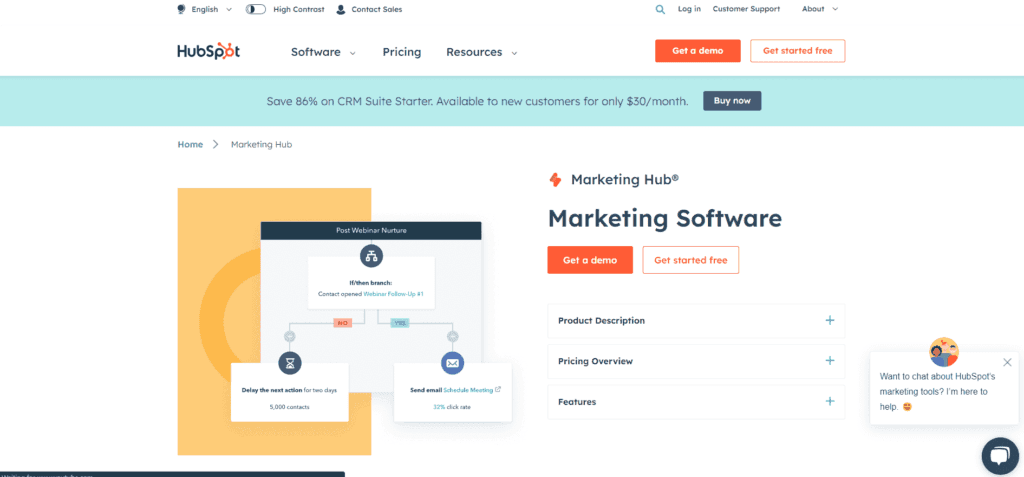
Features:
HubSpot is a holistic marketing platform offering a suite of tools, including ad tracking and sequencing capabilities.
- Ad Sequencing: Allows the creation of ad sequences based on user interaction.
- ROI Tracking: Calculates return on investment for each ad campaign.
- Integration: Seamlessly integrates with the HubSpot CRM.
Pricing:
HubSpot Marketing Hub starts at $50/month, with more advanced plans available.
Pros:
- User-friendly interface.
- Offers a comprehensive suite of marketing tools.
- Great customer support.
Cons:
- Can become expensive as you add more features.
- Some advanced features require technical know-how.
#3. AdRoll

Features:
AdRoll is designed specifically for retargeting, making it great for tracking and sequencing ads across multiple platforms.
- Cross-Platform Retargeting: Reach users on web, social, and even email.
- Audience Segmentation: Target users based on behavior, location, and more.
- Dynamic Creative: Tailor ads to individual users.
Pricing:
Pricing is customized based on usage and requirements.
Pros:
- Comprehensive retargeting options.
- Integrates with major e-commerce platforms.
- Access to detailed analytics.
Cons:
- Can be more expensive than other platforms.
- Best suited for retargeting rather than full-fledged ad campaigns.
#4. Kenshoo
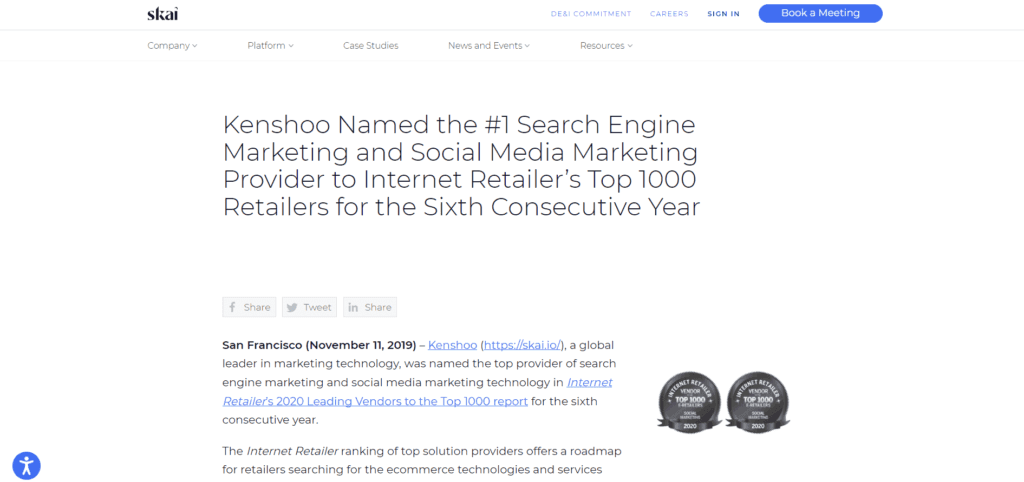
Features:
Kenshoo is a cross-channel advertising platform offering robust tracking and sequencing tools.
- Intelligent Campaign Automation: Auto-adjusts bids based on real-time data.
- Holistic View: Combines data across search, social, and e-commerce.
- Advanced Forecasting: Uses historical data to predict future outcomes.
Pricing:
Kenshoo operates on a quote-based pricing system.
Pros:
- Advanced machine learning capabilities.
- Integration with major advertising platforms.
- Comprehensive reporting tools.
Cons:
- Might be overkill for smaller businesses.
- Steeper learning curve.
#5. Criteo
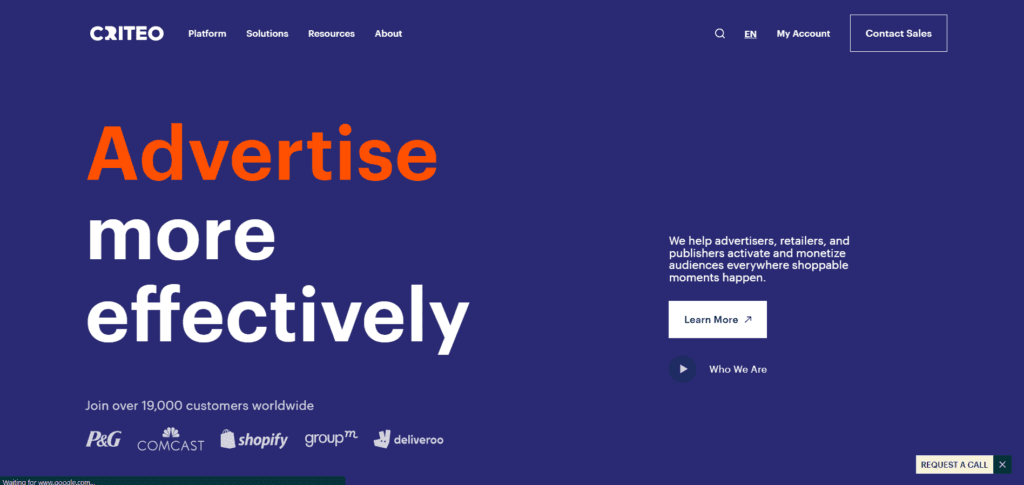
Features:
Criteo specializes in retargeting, offering tools to re-engage lost customers.
- Dynamic Retargeting: Personalize ads based on user activity.
- In-App Retargeting: Engage users within mobile apps.
- Conversion Analysis: Understand what’s driving sales.
Pricing:
Criteo operates on a performance-based pricing model.
Pros:
- Wide reach, with access to various publishers.
- Powerful retargeting capabilities.
- User-friendly for beginners.
Cons:
- Primarily focused on retargeting.
- Less control over where ads appear.
#6. Adobe Advertising Cloud
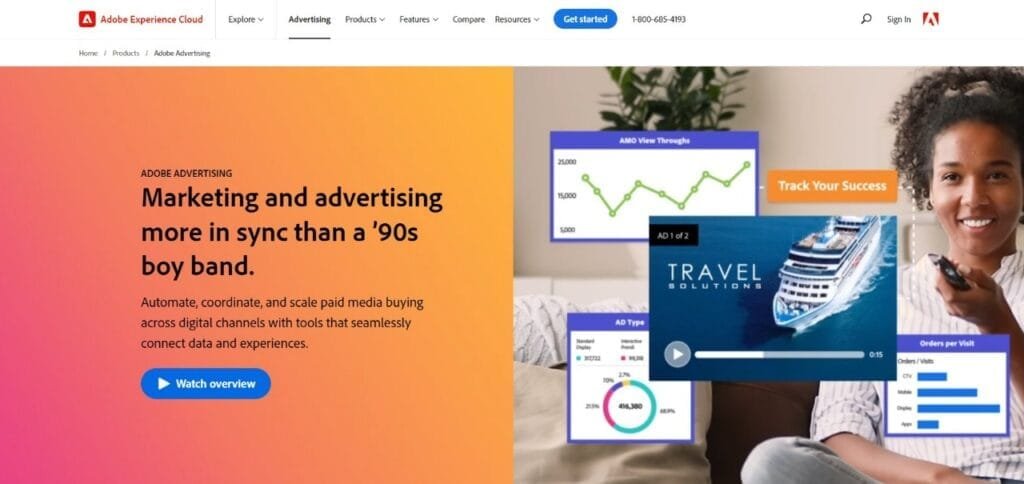
Features:
Part of the Adobe Experience Cloud, this tool offers a solution for managing ads across various channels.
- Cross-Channel Management: Unified dashboard for all ad campaigns.
- Performance Optimization: Uses AI to auto-adjust campaigns for best results.
- Brand Safety: Ensures ads appear in brand-safe environments.
Pricing:
Pricing is custom, based on individual business needs.
Pros:
- Integrated with other Adobe products.
- Focus on transparency and user privacy.
- Advanced analytics and reporting.
Cons:
- Might be expensive for small businesses.
- Requires training to use effectively.
Channel-specific Best Practices
Understanding the nuances and strengths of each advertising channel is essential for maximizing your campaign’s effectiveness. Each platform offers unique features and caters to distinct audiences, necessitating tailored approaches.
Social Media: Ad formats, targeting options, and best practices
Social media platforms are dynamic, catering to billions globally. While they share similarities, each has its distinct flavor.
From ephemeral Stories on Instagram to in-feed videos on Facebook, the ad format landscape is vast. Twitter’s concise tweets, LinkedIn’s B2B-focused sponsored content, and Pinterest’s visual pins each offer unique opportunities.
Search Engines: PPC strategies, keyword optimization, and retargeting
Search engines like Google are intent-driven platforms where users actively seek information.
Ads can be text-based or visual Shopping Ads. Keyword targeting ensures your ads reach users based on their search queries. Costs per click can vary widely based on keyword competition. High intent means users are more likely to convert. It’s also easy to measure ROI and adjust campaigns in real-time.
However, intense competition can drive up costs. It’s also crucial to continuously update keyword strategies to stay relevant.
Email: Segmentation, personalization, and timing
Despite being one of the oldest digital platforms, email remains a potent advertising channel.
Options range from newsletters to promotional blasts and transactional emails. Advanced automation tools enable sophisticated drip campaigns based on user behavior.
Email ad pricing are often subscription-based, with costs scaling with the number of contacts or emails sent.
Pros:
Direct access to a user’s inbox can foster intimate brand-consumer relationships. High personalization potential increases engagement.
Cons:
Overly frequent or irrelevant emails can lead to unsubscribes. Deliverability can be a concern, with emails landing in spam or promotions folders.
Display Networks: Visual strategies, retargeting, and placement
Display networks span numerous websites, showing banner ads or rich media to targeted audiences. Diverse formats from static images to interactive rich media. Placement can range from prominent website headers to sidebars.
Pricing:
Varies based on ad size, placement, and website traffic. Can be PPC or based on impressions.
Pros:
Broad reach across various websites. Excellent for brand visibility and retargeting.
Cons:
Ad-blocker usage can limit visibility. Without precise targeting, there’s a risk of irrelevant placements, leading to wasted spend.
Integrating Offline Advertising into the Mix
In today’s digital age, offline advertising – be it billboards, print ads, or TV spots – might seem archaic. However, integrating it with online efforts can create a holistic brand experience.
Bridging the gap between online and offline advertising
Modern consumers journey between online and offline touchpoints seamlessly. A QR code on a billboard can lead to a website, or a TV ad can prompt a Google search. Ensuring synergy between these points is vital. Tactics like using consistent branding, running complementary campaigns, or employing location-based targeting can bridge this divide effectively.
Tactics for tracking offline conversions from online efforts
It’s a challenge: How do you measure if a Facebook ad led someone to visit your physical store? Solutions range from coupon codes exclusive to specific ads to sophisticated tools like Google’s Store Visits, which estimates store visits driven by online ads.
Role of Content in Cross-Channel Advertising
In a world brimming with ads, authentic and valuable content makes a brand stand out. Here’s why content is the linchpin of cross-channel advertising and how to optimize it.
Content as the Backbone of Advertising Campaigns
Every ad is content. Whether it’s a snappy tweet, a comprehensive video, or a compelling email, it’s the quality of the content that determines the success of the ad. Audiences are flooded with countless messages every day; only those that resonate genuinely or offer value get noticed. Hence, investing in high-quality, relevant, and authentic content isn’t an option; it’s a necessity.
Tailoring Content Formats to Different Channels
Every advertising channel has its language. What works on Instagram might fall flat on LinkedIn, and what grabs attention on a display banner might be too succinct for an email.
- Video: Platforms like YouTube or TikTok are inherently video-based. But even on platforms where video isn’t the primary content type, it’s shown to have high engagement rates. However, while a detailed explainer video might work best on your website or YouTube, short, catchy clips or stories are best suited for social media.
- Images and Graphics: Visual content is paramount on platforms like Instagram and Pinterest. High-quality, relevant imagery, paired with compelling copy, can drive significant engagement.
- Textual Content: Blogs, articles, and long-form content serve to educate and inform. They’re ideal for platforms like LinkedIn or your brand’s website, where users are in a more contemplative mindset.
- Interactive Content: Quizzes, polls, and interactive videos can be incorporated into social media or your website to boost engagement and gather data.
Strategies for Re-purposing Content Across Platforms
Content creation is resource-intensive. But once a piece of content is created, it can be adapted to various formats suitable for different platforms. A detailed blog post can be distilled into key points for an infographic, which can further be summarized into tweets or social media posts. Similarly, a webinar can be edited into bite-sized video clips or even transcribed into an article. This approach maximizes ROI on content creation efforts while ensuring consistent messaging across channels.
Importance of Data and Analytics
Harnessing data and analytics is fundamental in optimizing cross-channel advertising endeavors. With the multitude of interactions and touchpoints across platforms, understanding and interpreting this data becomes paramount.
Monitoring Cross-Channel Metrics vs. Channel-Specific Metrics
While channel-specific metrics, such as click-through rates on display ads or open rates for emails, are essential, they provide a myopic view. Cross-channel metrics give a comprehensive understanding of how your efforts on various platforms synergize and contribute to the bigger picture.
A holistic view could involve analyzing the customer journey from a Facebook ad, to an email sign-up, to finally a purchase on your website. This multi-touch attribution showcases the collective strength of your advertising strategy.
Tools and Platforms for Effective Cross-Channel Analysis
#1. Mixpanel

Features:
Mixpanel offers powerful user analytics for understanding user actions across web, mobile, and other digital platforms.
- Event-based Tracking: Understand user interactions on a granular level.
- Retention Analysis: Dive deep into repeat user behavior.
- Flow Visualization: Track user pathways through your platforms.
Pricing:
Mixpanel’s pricing is based on data points and starts with a free tier. Premium tiers are available depending on data needs.
Pros:
- Intuitive interface.
- Real-time data updates.
- Flexible API for integrations.
Cons:
- Pricing can escalate with increased data points.
- Steeper learning curve for advanced features.
#2. Kissmetrics
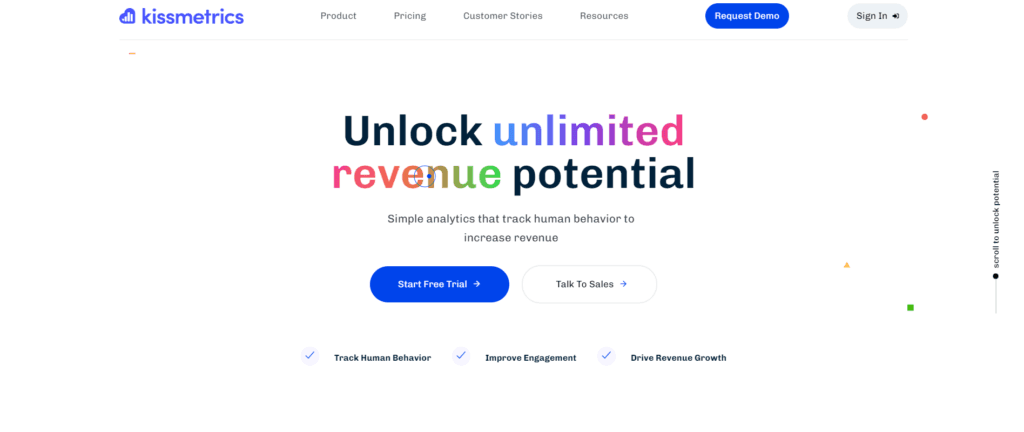
Features:
Kissmetrics is an analytical tool focused on person-based analytics, highlighting the journey of individuals through your platforms.
- Behavioral Analytics: Analyze specific user actions.
- A/B Testing: Test changes and their impact on user behavior.
- Automated Reports: Schedule and automate reporting.
Pricing:
Kissmetrics has customized pricing based on specific business needs.
Pros:
- Deep insights into individual user journeys.
- Seamless integration with other tools.
- Comprehensive funnel analysis.
Cons:
- Can be pricier than competitors.
- Some users find the interface less intuitive.
#3. Optimizely
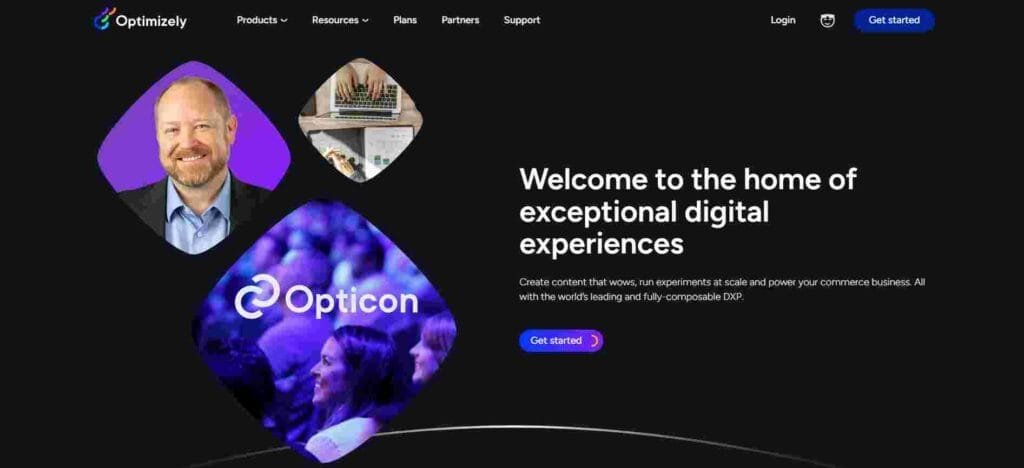
Features:
Optimizely offers experimentation and personalization across websites, mobile apps, and connected devices.
- Web Experimentation: A/B test web changes.
- Ad Campaign Experiments: Test and measure advertising strategies.
- Server-side Experiments: Test algorithms, product search results, and more.
Pricing:
Optimizely’s pricing is custom and based on individual requirements.
Pros:
- Robust testing environment.
- Multi-platform support.
- Scalable for businesses of all sizes.
Cons:
- Requires technical knowledge for complex tests.
- Pricing isn’t transparent.
#4. Data Studio by Google
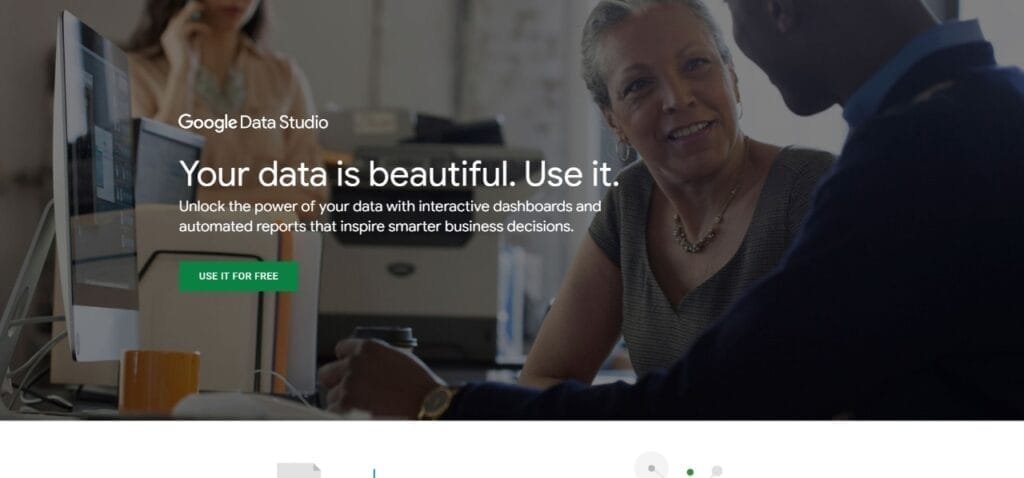
Features:
Google’s free tool for creating dashboards and reports that are easy to read, easy to share, and customizable.
- Data Connectors: Connect to various Google services and external sources.
- Custom Visualizations: Design reports based on business needs.
- Real-time Collaboration: Edit reports simultaneously with teammates.
Pricing:
Free to use.
Pros:
- Seamless integration with Google services.
- Highly customizable.
- Supports a wide range of data connectors.
Cons:
- Advanced features may require scripting.
- Limited to the connectors available.
#5. Tableau

Features:
Tableau is a data visualization tool that can turn raw data into understandable charts, graphs, and visuals.
- Drag-and-drop Interface: Easily manipulate data.
- Data Blending: Combine different datasets into one view.
- Secure Sharing: Share findings while maintaining data security.
Pricing:
Tableau’s pricing starts at $70/user/month with different pricing tiers available.
Pros:
- Powerful data visualization capabilities.
- Supports vast data sources.
- Active user community for support.
Cons:
- Steep learning curve.
- Can be resource-intensive on computers.
#5. Segment
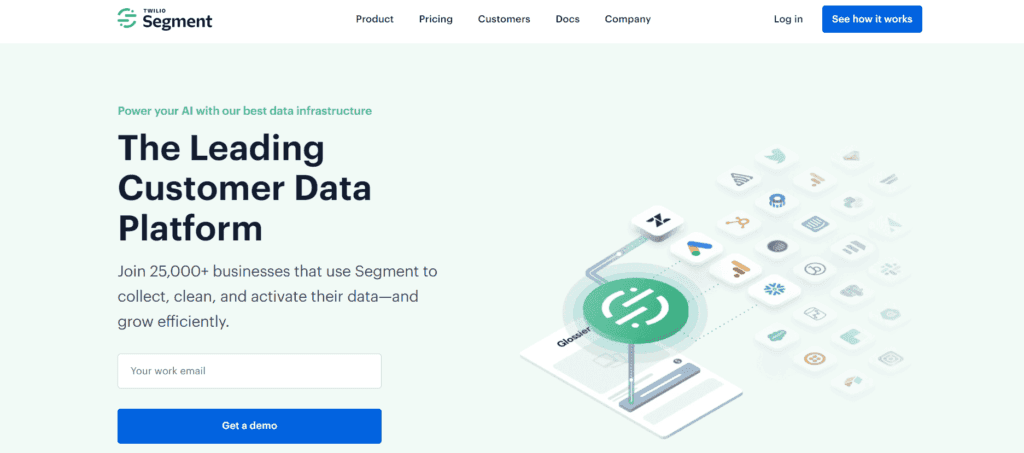
Features:
Segment is a customer data platform that unifies user data across all platforms and tools.
- Unified Customer Profiles: View user interactions across all touchpoints.
- Data Governance: Maintain data integrity and standards.
- Platform Integrations: Connect to over 300+ tools seamlessly.
Pricing:
Segment offers both free and premium tiers, with premium pricing based on monthly tracked users.
Pros:
- Streamlines data collection.
- Enhances the potential of other tools by centralizing data.
- Maintains data accuracy.
Cons:
- Overhead costs for premium features.
- Requires setup to unify data sources.
Tactics to Derive Actionable Insights for Campaign Optimization
Data, in isolation, is just numbers. Translating this data into actionable insights is where its real value lies. For example, if data shows that a user clicked on a PPC ad, browsed products but abandoned the cart, retargeting strategies can be employed. Or if an email campaign has a high open rate but low click-through, the content or the CTA might need reevaluation.
Personalization and Dynamic Content
In today’s digital landscape, generic ads are easily overlooked. Instead, customers expect ads to be tailored to their preferences and behavior. This is where personalization and dynamic content come into play, revolutionizing cross-channel advertising.
Personalization isn’t just about addressing the customer by their first name. It’s a strategy that tailors content based on user data, preferences, and behaviors. For instance, a user browsing winter jackets on an e-commerce site might later receive an email promotion about a winter sale or see related ads on their social media feeds. This continuity across channels reinforces brand recall and often nudges the user towards conversion.
Implementing Dynamic Content for Tailored User Experiences
Dynamic content changes based on the user’s profile, behavior, or real-time factors like location. For example, a brand’s website might display different homepage banners to visitors from the US and the UK due to seasonal differences. Or an email campaign could promote products based on the recipient’s browsing history.
Implementing dynamic content requires a synergy of data analytics and technological integration. As the user interacts across channels, data points are captured. Sophisticated algorithms then use this data to display the most relevant content to the user.
Tools and Platforms Facilitating Dynamic Content Delivery
Several platforms enable marketers to deliver personalized content:
#1. OneSpot

Features:
OneSpot leverages AI to deliver a personalized content experience across digital touchpoints.
- Individualization Platform: Delivers personalized content to each user.
- Content Sequencing: Curates content order based on user interaction.
- Cross-channel Integration: Consistent experience across email, web, mobile, and more.
Pricing:
OneSpot employs custom pricing based on individual business needs and size.
Pros:
- Deep personalization driven by AI.
- Integration with major marketing platforms.
- Continuous learning from user interactions.
Cons:
- Custom pricing can be a barrier for smaller businesses.
- Some initial setup required for integration.
#2. Dynamic Yield
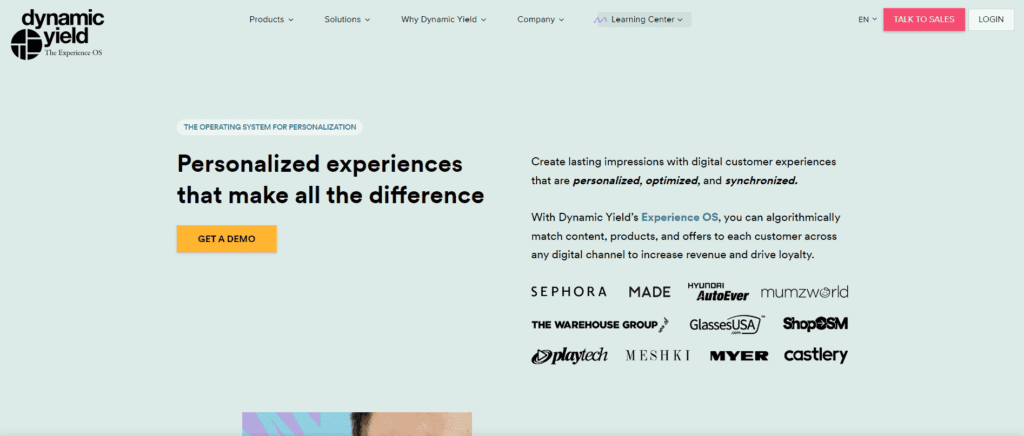
Features:
Dynamic Yield is designed for e-commerce and multi-brand marketers to personalize, optimize, and contextualize their offerings.
- Omnichannel Personalization: Consistent personalization across devices.
- Recommendation Engine: AI-driven product and content recommendations.
- Experimentation & A/B Testing: Find the most effective content strategy.
Pricing:
Pricing is tailored based on monthly unique visitors and specific requirements.
Pros:
- Strong focus on boosting e-commerce revenue.
- Seamless integration with many e-commerce platforms.
- Robust analytics dashboard.
Cons:
- Priced towards mid-to-large scale enterprises.
- Can be overwhelming for those new to personalization.
#3. Evergage (now part of Salesforce)

Features:
Evergage’s real-time personalization platform allows businesses to transform the dream of 1:1 customer engagement into reality.
- Behavior Tracking: Understand user intentions in real-time.
- AI-driven Personalization: Deliver contextually relevant experiences.
- Segment Discovery: Automatically spot valuable segments.
Pricing:
As part of Salesforce, pricing details are provided upon request.
Pros:
- Deep integration with the Salesforce ecosystem.
- Powerful real-time analytics.
- Suitable for both B2B and B2C.
Cons:
- Requires training for full utilization.
- Pricing transparency can be an issue.
#4. Adobe Target

Features:
Adobe Target allows for personalized content delivery, making every interaction valuable.
- Automated Personalization: AI-driven content suggestions.
- Multi-Armed Bandit Testing: More advanced than typical A/B tests.
- Mobile App Optimization: Enhance mobile app user experience.
Pricing:
Adobe Target is part of Adobe’s Marketing Cloud, and pricing is based on a custom quote.
Pros:
- Part of the comprehensive Adobe ecosystem.
- Advanced testing mechanisms.
- Strong reporting capabilities.
Cons:
- Can be on the pricier side.
- Steeper learning curve compared to other platforms.
#5. Barilliance
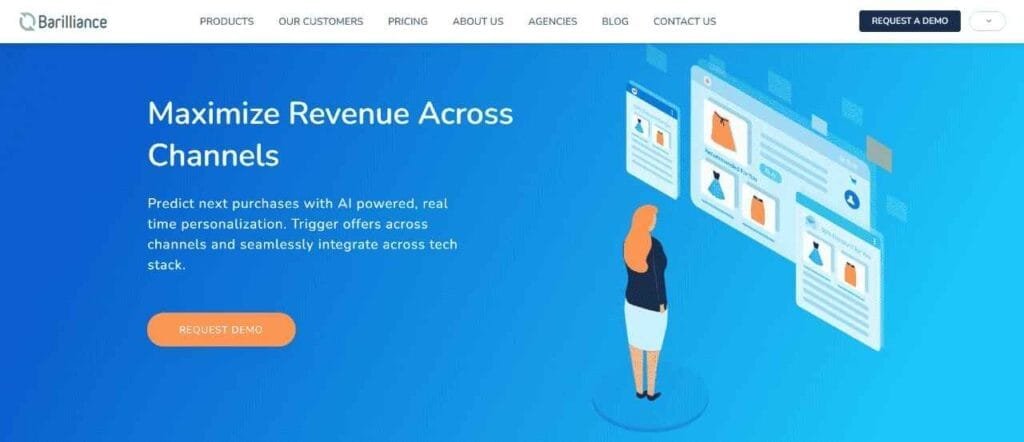
Features:
Barilliance focuses on e-commerce personalization, offering a suite of tools to increase conversion rates and cart value.
- Live Personalization: Real-time adjustments based on user behavior.
- Retargeting Emails: Recover lost sales.
- Product Recommendations: Dynamic product suggestion for users.
Pricing:
Pricing is based on website traffic and is available upon request.
Pros:
- E-commerce centric features.
- Seamless integration with many shopping cart platforms.
- Offers a full suite for e-commerce needs.
Cons:
- Mostly tailored for e-commerce, less versatile for other industries.
- Pricing can be a barrier for smaller businesses.
Budgeting and Resource Allocation
With multiple channels to invest in, budgeting becomes a crucial component of cross-channel advertising. Ensuring efficient resource allocation ensures campaigns derive maximum ROI.
Assessing Channel Effectiveness and Potential ROI
Before diving into budget allocation, it’s essential to understand which channels drive the most value. This involves studying metrics like cost-per-acquisition (CPA), conversion rates, and customer lifetime value for each channel. If Instagram drives the most conversions at a lower CPA than other channels, it might warrant a more substantial budget chunk.
Strategies for Allocating Budgets Based on Past Performance and Projected Outcomes
Historical data can provide insights into channel performance, but it’s also vital to stay attuned to evolving trends. For instance, if a new platform starts gaining traction among your target audience, you might want to allocate a part of your budget to test its waters.
Periodic reviews of budget allocation are crucial. As campaigns run, some channels might outperform while others underperform. Shifting budgets based on real-time performance can optimize outcomes.
Tools for Efficient Budget Management and Reallocation
#1. Allocadia

Features:
Allocadia offers marketing performance management software, focusing on planning, budgeting, and performance analytics.
- Marketing Plan Visualization: Clear visuals for strategy and investments.
- Investment Data Centralization: Single source of truth for all marketing spend.
- Performance Metrics: Understand ROI and reallocate based on data-driven insights.
Pricing:
Pricing details are provided upon request, catering to businesses of various sizes.
Pros:
- Strong integration with many CRM platforms.
- Intuitive UI making budgeting more straightforward.
- Detailed analytics for understanding marketing spend efficiency.
Cons:
- Requires integration setup time.
- Pricing can be a barrier for smaller businesses.
#2. Factors.ai

Features:
Factors.ai is designed for B2B businesses, blending attribution with planning for budget optimization.
- Multi-touch Attribution: Understand every touchpoint’s value in the sales funnel.
- Ad Spend Tracking: Monitor how much is spent on each ad platform.
- Forecasting: Predict future sales based on current marketing activities.
Pricing:
Part of the Adobe family, specific pricing details are available upon request.
Pros:
- Deep B2B focus and insights.
- Seamless integration with platforms like Salesforce.
- Comprehensive ad spend analytics.
Cons:
- More tailored for B2B than B2C.
- Can be overwhelming for marketing teams new to attribution.
#3. Husky Marketing Planner
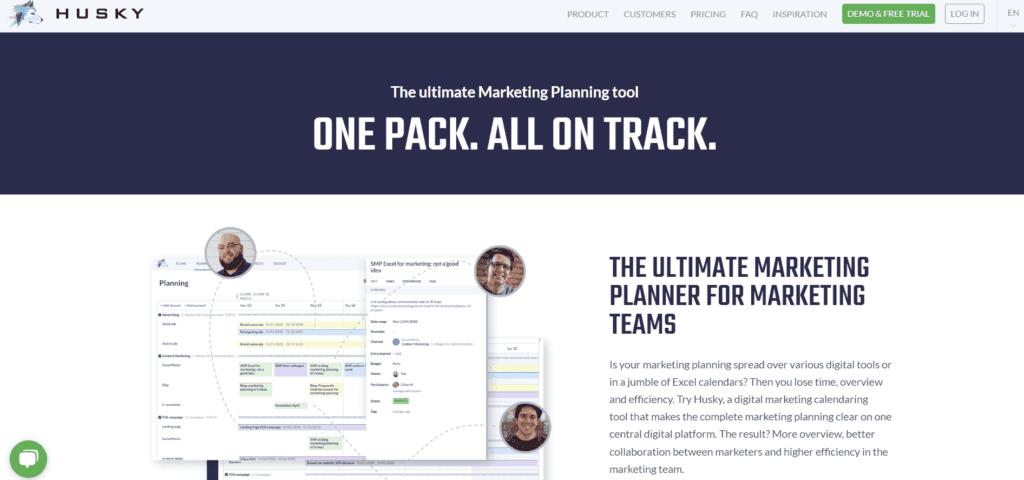
Features:
Husky offers a digital platform for marketing management, focusing on budget, strategy, and communication.
- Budget Overview: Clear visualization of marketing budget allocation.
- Task Management: Link tasks with budget items.
- Collaboration Tools: Team communication and document sharing within the platform.
Pricing:
Husky offers a straightforward pricing model based on users, starting from $39/user/month.
Pros:
- Clear and intuitive UI.
- Strong collaboration features for marketing teams.
- Task and budget management in a single platform.
Cons:
- Less detailed analytics compared to other platforms.
- Best for small to mid-sized teams.
#4. Marketing Evolution
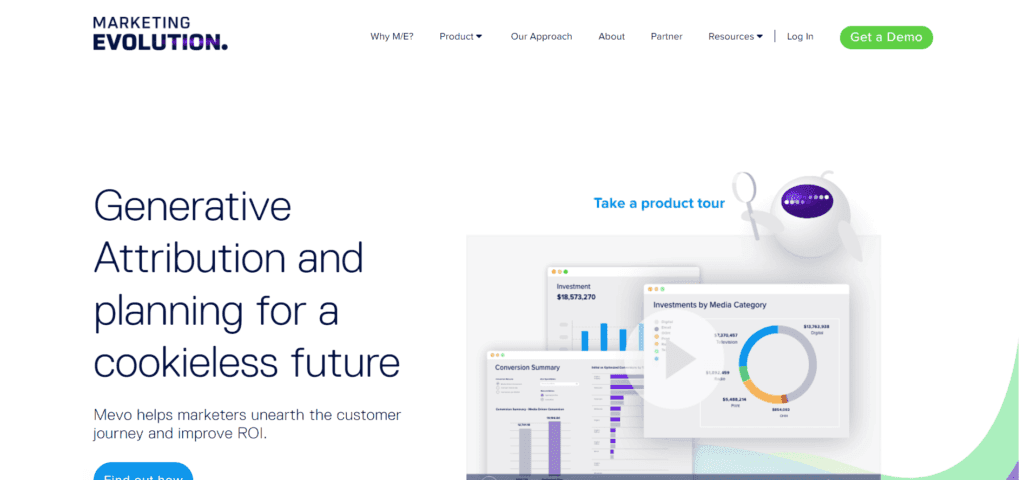
Features:
This platform offers optimization solutions for marketers focused on improving their ROI.
- ROI Measurement: Real-time insights into marketing spend effectiveness.
- Customer Journey Insights: Understand customer touchpoints and allocate budget accordingly.
- Scenario Planning: Test various budget scenarios to optimize allocations.
Pricing:
Pricing is tailored to individual business needs and is available upon request.
Pros:
- Deep insights into ROI and customer journeys.
- Offers a holistic view of marketing effectiveness.
- Allows for predictive scenario planning.
Cons:
- More suitable for large enterprises.
- Requires a learning curve to fully utilize its features.
#5. Basis
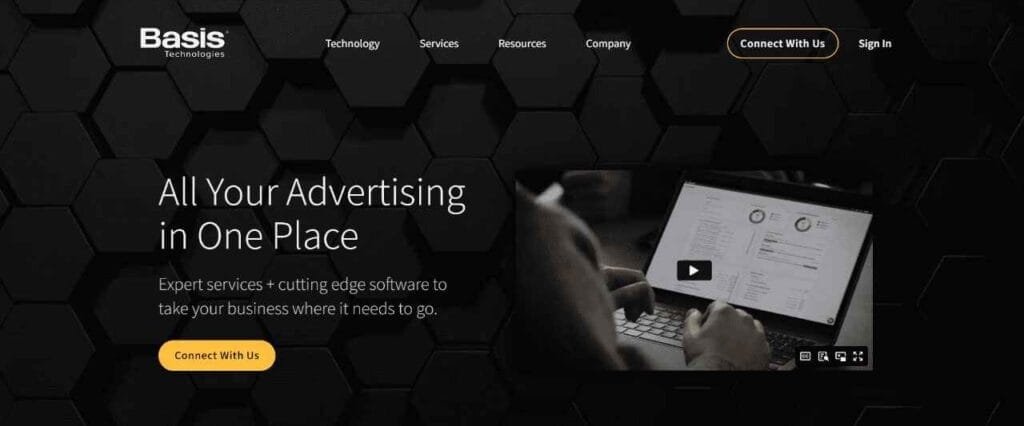
Features:
Basis provides a digital media management platform, focusing on automating the digital media buying process.
- Media Buying Automation: Streamline media buying across platforms.
- Performance Analytics: Track ad performance and spend in real time.
- Budget Management: Set and adjust budgets based on campaign performance.
Pricing:
Basis’s pricing is available upon request and varies based on usage and organization size.
Pros:
- Consolidates digital media buying in one platform.
- Real-time budget and performance insights.
- Suitable for both agencies and businesses.
Cons:
- Mainly focused on media buying, less comprehensive for other marketing activities.
- Pricing may not suit smaller businesses.
Overcoming Common Cross-Channel Challenges
Cross-channel advertising, while offering myriad opportunities, also presents unique challenges. It’s essential to recognize these potential hurdles and devise strategies to address them for smooth campaign execution.
Identifying Potential Hurdles
Several challenges may arise in cross-channel advertising:
- Data Silos: When data is stored separately for each channel, it’s challenging to gain a holistic view of customer behavior.
- Inconsistent Messaging: Without a unified strategy, the brand message may vary across channels, causing confusion.
- Resource Overextension: Attempting to be everywhere can stretch resources thin, compromising the quality of campaigns.
- Attribution Issues: Understanding which channel drove a conversion becomes tricky when a user interacts with multiple touchpoints.
Tactics to Overcome Fragmentation and Ensure Smooth Campaign Execution
- Integrated Marketing Platforms: Tools like Salesforce or Marketo can integrate data from various sources, breaking down silos.
- Unified Brand Strategy: Establishing a core message and ensuring it’s consistently portrayed across channels can build a cohesive brand image.
- Prioritizing Channels: Based on audience research and past performance, focus on channels that yield the best results. It’s better to excel in a few channels than to be mediocre in many.
- Advanced Attribution Models: Rather than relying on last-click attribution, consider models that account for multiple touchpoints, like linear or time-decay attribution.
Future Trends in Cross-Channel Advertising
The world of advertising never remains static. As technology advances and consumer behaviors shift, cross-channel advertising must adapt to stay relevant and effective.
Emerging platforms and technologies are continually transforming how brands interact with their audiences. For instance, the rise of TikTok introduced a new medium for advertisers, while voice search platforms like Alexa and Google Home have opened new avenues for engagement.
Predicted Trends: AI in Targeting, VR/AR Channels, Voice Search, etc.
- AI and Machine Learning: As AI becomes more sophisticated, it will play a pivotal role in audience segmentation, targeting precision, and ad optimization.
- VR/AR Channels: Virtual and Augmented Reality offer immersive advertising experiences. Brands can create interactive campaigns where users can “try” products virtually.
- Voice Search Advertising: As smart speakers become household staples, voice search advertising will grow. Brands will need to optimize for voice search and consider how to effectively advertise in this audio-first channel.
- Interactive Ads: With advancements in technology, ads will become more interactive, engaging users in novel ways, from shoppable video ads to gamified ad experiences.
Staying Updated and Adapting to the Ever-Evolving Cross-Channel World
Continued education is essential. Attend industry seminars, participate in webinars, and stay updated with publications to understand the shifting landscape. But more importantly, be ready to adapt. Test new channels, iterate on strategies, and be willing to pivot when necessary.
Wrapping it Up
Cross-channel advertising, when executed effectively, can immensely enhance a brand’s visibility, engagement, and conversion rates. Recognizing the distinct nuances of each channel and tailoring campaigns to resonate with the specific audience is vital. An integrated approach, aided by advanced tools and analytics, can help businesses navigate the intricate web of multi-platform advertising.
However, it’s imperative to stay updated with emerging trends, continually evolve strategies, and maintain a customer-centric focus. As we delve further into the digital age, brands that harness the power of cross-channel advertising will undoubtedly gain a competitive edge.
Read Next:
- How to Utilize Dynamic Content in Email Campaigns
- SaaS Startups and SEO: Tailored Strategies for Software Companies
- SEO for Big-ticket B2B Businesses: What’s Different
- 21+ Ways Chatbots can Skyrocket Lead Generation and Conversions
- Data Processing Agreement: An International Perspective




















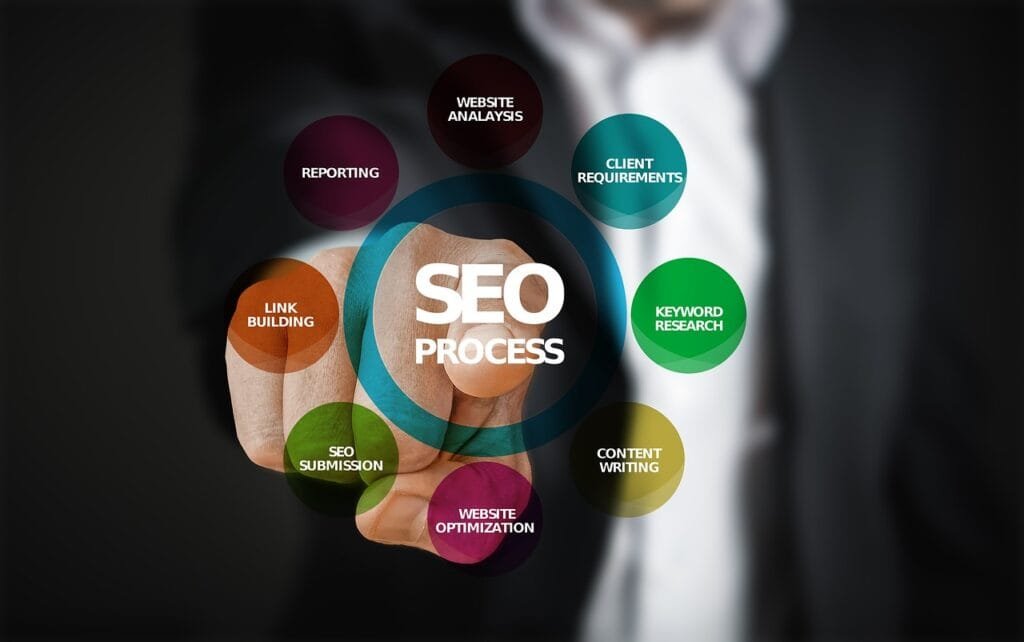

Comments are closed.